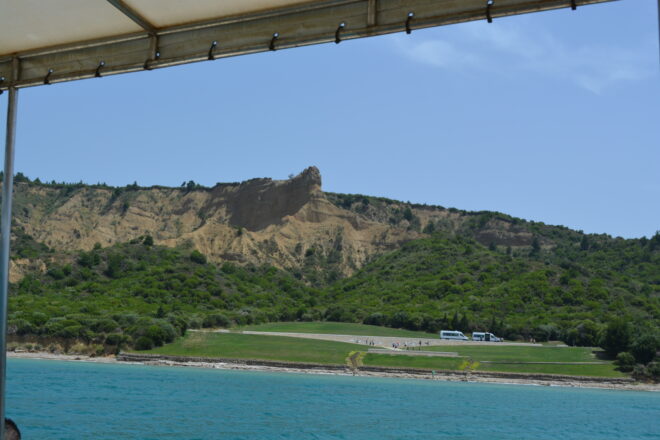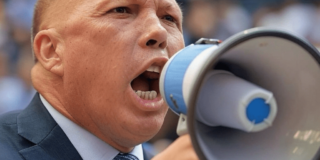
Introduction
ANZAC Day, commemorated annually on April 25, stands as a cornerstone of Australian national identity, symbolising the courage and sacrifice of the Australian and New Zealand Army Corps during World War I, particularly at Gallipoli. This day has become a powerful ritual of remembrance, bringing together communities across the nation in a shared act of honoring military service. However, the narrative surrounding ANZAC Day has often marginalized the contributions of Indigenous Australians, whose service in the military is a significant yet overlooked aspect of this history. Approximately 800 to 1,000 Indigenous soldiers enlisted in World War I, overcoming systemic barriers and discrimination, only to face exclusion from post-war benefits and a lack of memorials acknowledging their sacrifices.
This blog post aims to explore the cultural significance of ANZAC Day, the experiences of Indigenous soldiers during and after the war, and the emergence of memorials dedicated to their recognition. By examining these themes, we can understand how incorporating Indigenous stories into ANZAC Day can foster inclusivity and support reconciliation, enriching Australia’s military narrative and ensuring that all who served are honoured.
The Cultural Significance of ANZAC Day
ANZAC Day originated as a response to the Gallipoli campaign of 1915, which resulted in heavy casualties for Australian and New Zealand troops. Although the campaign was a military failure, it became a defining moment for Australia as a fledgling nation seeking to establish its identity within the British Empire. The first commemorative events began in 1916, evolving into a national holiday by the 1920s. Historian C.E.W. Bean played a pivotal role in shaping the ANZAC legend, emphasizing qualities such as mateship, resilience, and egalitarianism that became central to Australia’s national narrative.
The rituals associated with ANZAC Day – dawn services, marches, and the playing of the Last Post – serve as a unifying force, allowing Australians to reflect collectively on their shared history. Over the years, ANZAC Day has expanded to encompass all Australian military service, ensuring its relevance across generations. However, while the day has been a source of national pride, it has also faced criticism for its narrow focus on the experiences of white male soldiers, often sidelining the contributions of women and Indigenous Australians.
In recent years, there has been a growing recognition of the need to broaden the ANZAC narrative to include the diverse experiences of all who served. This includes acknowledging the significant contributions of Indigenous soldiers, who have historically been underrepresented in both public memorials and official histories. As Australia continues to grapple with its colonial past and strive for a more inclusive future, it becomes essential to integrate Indigenous stories into the fabric of ANZAC Day commemorations.
Indigenous Soldiers in World War I
Despite facing systemic barriers, many Indigenous Australians enlisted in World War I. The Defence Act of 1903 initially restricted military service to those of “substantially European descent,” effectively excluding Aboriginal and Torres Strait Islander men. However, by 1917, recruitment shortages led to a relaxation of these restrictions, allowing an estimated 800 to 1,000 Indigenous soldiers to join the ranks, often by claiming mixed heritage or circumventing bureaucratic checks. The true number of Indigenous servicemen remains uncertain due to incomplete records and the tendency of many to enlist under anglicised names.
The motivations for Indigenous soldiers to enlist were varied. For some, military pay offered a more stable income than what was available on reserves or missions. Others sought adventure, while many aimed to demonstrate their equality in a society that marginalised them. Oral histories reveal a common desire among these soldiers to “stand as men,” reflecting their quest for dignity in the face of pervasive racism. Their determination to serve despite systemic obstacles underscores their resilience and commitment to their country.
Indigenous soldiers participated in various roles, including infantry, light horse regiments, and support units, serving on battlefields in Gallipoli, the Western Front, and the Middle East. Notable figures include Private Douglas Grant, who survived the trenches of the Western Front, and Private William Punch, who fought valiantly at Gallipoli. At least 12 Indigenous soldiers received military honours for bravery, though many acts of valor went unrecorded due to institutional biases. While wartime camaraderie sometimes bridged racial divides, instances of prejudice also persisted, highlighting the complexities of their experiences in the military.
Documenting the contributions of Indigenous soldiers presents challenges, as many were not officially recognised as Aboriginal or Torres Strait Islander in military records. However, Indigenous communities have preserved their stories through oral traditions, which have become vital for historians seeking to reconstruct this overlooked aspect of Australia’s military history. The absence of dedicated memorials for these soldiers has further delayed their recognition, making it essential to establish tangible tributes that honor their legacy.
Post-War Experiences and Historical Neglect
Upon returning from World War I, Indigenous veterans encountered a society that largely denied them the benefits and recognition afforded to their non-Indigenous counterparts. The Soldier Settlement Scheme, designed to provide land grants to returning veterans, was largely inaccessible to Indigenous Australians, who were often classified as “incapable” of managing land. As a result, only one known Indigenous veteran received a land grant in New South Wales. Similarly, pensions and medical benefits were frequently withheld or reduced based on their Aboriginal status, leaving many veterans to return to missions or reserves under restrictive conditions.
This exclusion had profound and lasting consequences. While non-Indigenous veterans utilised land grants to build generational wealth, Indigenous families remained trapped in cycles of poverty, contributing to ongoing socioeconomic disparities. The promise of equality for their service was shattered, as the 1920s saw an increase in protectionist laws that further limited Indigenous rights. Some veterans, like Douglas Grant, used their experiences to advocate for their communities, but others faced ostracism for challenging racial norms.
The lack of public recognition for Indigenous veterans extended to commemorative events as well. Official histories, such as Bean’s extensive accounts of the war, frequently omitted Indigenous contributions, perpetuating their invisibility in the national narrative. Early ANZAC Day events rarely acknowledged the service of Indigenous soldiers, and many were excluded from Returned and Services League clubs due to racial prejudice. The absence of memorials dedicated to Indigenous veterans starkly illustrated the historical neglect of their sacrifices, leaving their contributions unrecognised in public spaces.
The marginalisation of Indigenous veterans has had intergenerational impacts. Denied economic opportunities and recognition, their families have faced ongoing hardships, compounded by the trauma of war and post-war discrimination. Nevertheless, the legacy of these veterans has inspired resilience within Indigenous communities, contributing to the civil rights movements of the 1960s and 1970s. The delayed recognition of their service underscores the critical need for memorials and public tributes that honor their sacrifices and preserve their stories.
Indigenous Veterans’ Memorials and ANZAC Day’s Evolution
Australia is home to over 4,000 war memorials, yet historically, none have been dedicated specifically to Indigenous veterans. This absence reflects the broader erasure of their contributions from the public consciousness. While Indigenous communities have long preserved stories of service through oral traditions, public recognition has only gained traction in recent decades. The lack of centralised records for Indigenous-specific memorials highlights their historical invisibility.
Efforts to address this oversight began in the 1990s, coinciding with milestones in the reconciliation process, such as the 1967 Referendum and the 2008 National Apology to the Stolen Generations. In 2000, the Australian War Memorial took a significant step by unveiling plaques honouring Indigenous service, marking the beginning of a more inclusive approach to commemoration. Community-led initiatives followed, including Toomelah’s 2009 plaque listing 21 First Nations veterans and the Yugambeh memorial, erected in 1991 to honour Indigenous contributions to defense.
Recent initiatives have further amplified recognition of Indigenous veterans. In 2022, Queensland unveiled a state memorial in Brisbane’s Anzac Square, one of the few dedicated to Aboriginal and Torres Strait Islander service members. Designed by Wakka Wakka artist John Smith Gumbula and sculptor Liam Hardy, the bronze monument symbolises cultural unity and honours Indigenous service across conflicts. Other notable memorials, such as South Australia’s 2013 Adelaide memorial and Warrnambool’s 2010 plaque recognising over 80 First Nations veterans, demonstrate a growing trend toward recognising Indigenous contributions.
The Saluting Their Service Commemorative Grants Program has played a pivotal role in funding memorial projects, allocating millions to ensure Indigenous veterans’ legacies are preserved in public spaces. The Department of Veterans’ Affairs has also supported the restoration of overseas memorials, broadening recognition of Australian service.
These memorials have become increasingly central to ANZAC Day commemorations. The Aboriginal and Torres Strait Islander Commemorative Ceremony, held after the dawn service at the “For Our Country” memorial, honors Indigenous service since 1901. Launched in 2007 by the Aboriginal and Torres Strait Islander Veterans and Services Association, this ceremony has gained prominence, featuring wreath-laying and live-streamed services. In 2017, Indigenous veterans led the national ANZAC Day march, marking a historic acknowledgment of their contributions. Educational materials now include Indigenous stories, and media such as the 2018 documentary Black Anzac have amplified their narratives, contributing to a richer understanding of Australia’s military history.
Despite these advancements, challenges remain. Some traditionalists resist broadening ANZAC Day’s focus, fearing it dilutes the significance of Gallipoli. Incomplete records hinder documentation efforts, as many soldiers enlisted under anglicised names. Bureaucratic obstacles and limited funding continue to constrain community projects, leading to calls for increased support from the Community War Memorials Fund. Proposals for reparative measures, such as posthumous medals or land grants for descendants, face delays.
However, opportunities for progress abound. Incorporating Indigenous ceremonies, such as smoking ceremonies, into ANZAC Day events could enhance inclusivity. Discussions regarding a proposed national Indigenous veterans’ memorial indicate a commitment to centralising commemoration efforts. Digital platforms, including virtual tours of memorials, align with Australia’s tourism initiatives, allowing for broader engagement with these narratives. Community-driven research, such as the Indigenous Australian Dictionary of Biography, continues to uncover stories, although sustained funding is essential for ongoing efforts.
The establishment of Indigenous veterans’ memorials transforms ANZAC Day into a more inclusive commemoration. These memorials provide spaces for truth-telling about Australia’s colonial past, fostering reconciliation and understanding. By honouring Indigenous resilience and sacrifice, these tributes ensure that all who served are remembered, aligning ANZAC Day with Australia’s multicultural ethos and bridging historical sacrifices with future unity.
Conclusion
ANZAC Day, rooted in the events of the Gallipoli campaign, remains a powerful symbol of sacrifice and national identity in Australia. However, the contributions of Indigenous soldiers, who served despite facing systemic barriers, have long been overlooked. Their post-war experiences, characterised by exclusion from benefits and public recognition, highlight the urgent need for memorials that honor their sacrifices. Recent initiatives, such as Queensland’s 2022 state memorial and community-led plaques, are steps toward addressing this historical neglect and integrating Indigenous stories into ANZAC Day commemorations.
These memorials, alongside ceremonies and educational efforts, enrich the national narrative, challenging traditional understandings of the ANZAC legacy. While challenges such as incomplete records and funding constraints persist, opportunities for inclusivity abound. By centering Indigenous veterans’ contributions and memorials, Australia can ensure that ANZAC Day honors all who served, fostering reconciliation and correcting historical oversights. This recognition affirms the resilience of Indigenous soldiers and secures their legacy within Australia’s collective memory.
References
• Bean, C.E.W. Official History of Australia in the War of 1914–1918. Sydney: Angus & Robertson, 1921–1942.
• Riseman, Noah. Defending Whose Country? Indigenous Soldiers in the Pacific War. Lincoln: University of Nebraska Press, 2012.
• Scarlett, Philippa. Aboriginal Service in the First World War. Canberra: Indigenous Histories, 2010.
• Winegard, Timothy C. Indigenous Peoples of the British Dominions and the First World War. Cambridge: Cambridge University Press, 2011.
• Australian War Memorial. For Country, For Nation: Indigenous Service Exhibition. Canberra, 2025.
• Department of Veterans’ Affairs. Unveiling of Queensland State Indigenous Memorial. Brisbane, 2022.
• Department of Veterans’ Affairs. Indigenous Australians at War. Canberra, 2020.
• ABC News. Anzac Day: Indigenous Soldiers Thought ‘When We Got Back We’d Be Treated Differently’. Sydney, 2017.
• Creative Spirits. Aboriginal War Memorials. 2022.
• National Archives of Australia, military records and oral histories.

